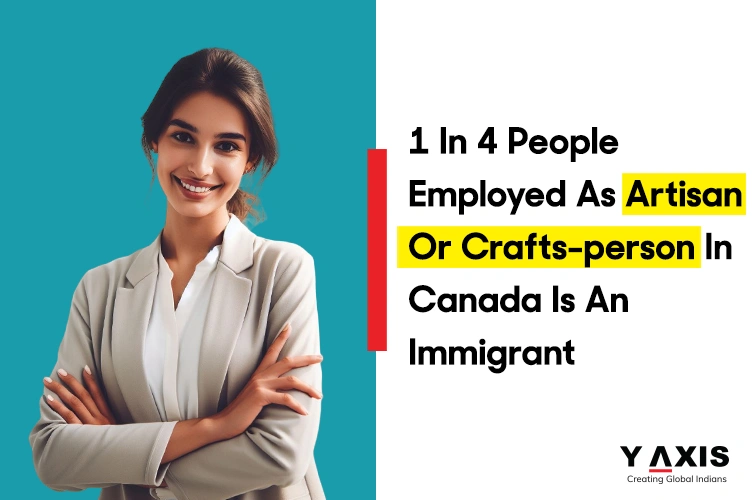Posted on November 13 2020
1 in 4 people employed as an artisan or craftsperson in Canada is an immigrant
By , Editor
Updated November 08 2024
Success of the immigration programs of Canada have a lot to do with a strong settlement factor.
Through various contribution agreements, Immigration, Refugees and Citizenship Canada [IRCC] funds service provider organizations throughout Canada, with the exception of Quebec.
According to the 2020 Annual Report to Parliament on Immigration, “Together, these organizations deliver a broad range of settlement services, which help newcomers to acquire knowledge about living and working in Canada, improve their official language skills, prepare for labour market entry, and form meaningful connections in their communities.”
IRCC’s settlement vision recognizes that successful integration requires a whole-of-society approach involving collaboration across all levels of government.
While the provinces and territories fund their own settlement services, IRCC works closely with them towards the advancement of shared interests.
As per the International Organization for Migration’s “Financial Report for the Year Ended 31 December 2019”, Canada was the fifth – among contributions from countries as well as the European Commission – largest financial contributor to the IOM.
Immigration continues to be a source of long-term economic growth in Canada. In the recently announced 2021-2023 Immigration Levels Plan, Canada has set for itself one of the highest levels of immigration in its history.
With 341,180 permanent resident admissions in 2019, Canada achieved its highest level of PR admissions in recent history. 58% of these were through the economic immigration class.
Immigrants represent 24% of the national workforce in Canada. 500,000 immigrants working in Canada are trained in STEM fields.
Moreover, it is estimated that immigrants account for 33% of all business owners in Canada.
The healthcare sector in Canada has a high demand for immigrants. Around 20% of Sports Coaches in Canada are immigrants.
Home to a vibrant arts and culture sector, Canada has many globally renowned artists, actors, authors, and musicians.
Immigrants have a significant role to play in helping the arts and crafts sector grow and flourish in Canada.
| Percentage of immigrants in creative occupations* | |
| Theater, fashion, exhibit and other creative designers | 26% |
| Artisans and craftspersons | 25% |
| Painters, sculptors and other visual artists | 24% |
| Graphic designers and illustrators | 24% |
| Photographers | 22% |
*As per Statistics Canada, 2016 Census.
Among the famous Canadian immigrants are many with their origins in India. Deepa Mehta, the renowned screenwriter and film director, migrated to Canada from India. Her famous films include the Elements Trilogy – Fire [1996], Earth [1998], and Water [2005].
Along with over 15 honorary degrees, Deepa Mehta is also the recipient of the Order of Ontario and the Order of Canada, among other awards.
Key figures: Immigration matters in arts and culture*
| 1 in 4 individuals working in Canada as a craftsperson or artisan is an immigrant |
| 29% of independent performers, artists and writers are immigrants |
| 26% of theater, exhibit, fashion, and other creative designers are immigrants |
| 3,000 businesses in the arts and culture sector are owned by immigrants |
| 80,000+ immigrants are working in professional and technical occupations in arts and culture across Canada |
* Statistics Canada 2016 Census.
If you are looking to Migrate, Study, Invest, Visit, or Work Overseas, talk to Y-Axis, the World’s No. 1 Immigration & Visa Company.
If you found this blog engaging, you may also like …
103,420 newcomers welcomed by Canada in the first half of 2020
Tags:
Share
Options for you by Y-Axis
Get it on your mobile
Get News alerts
Contact Y-Axis

